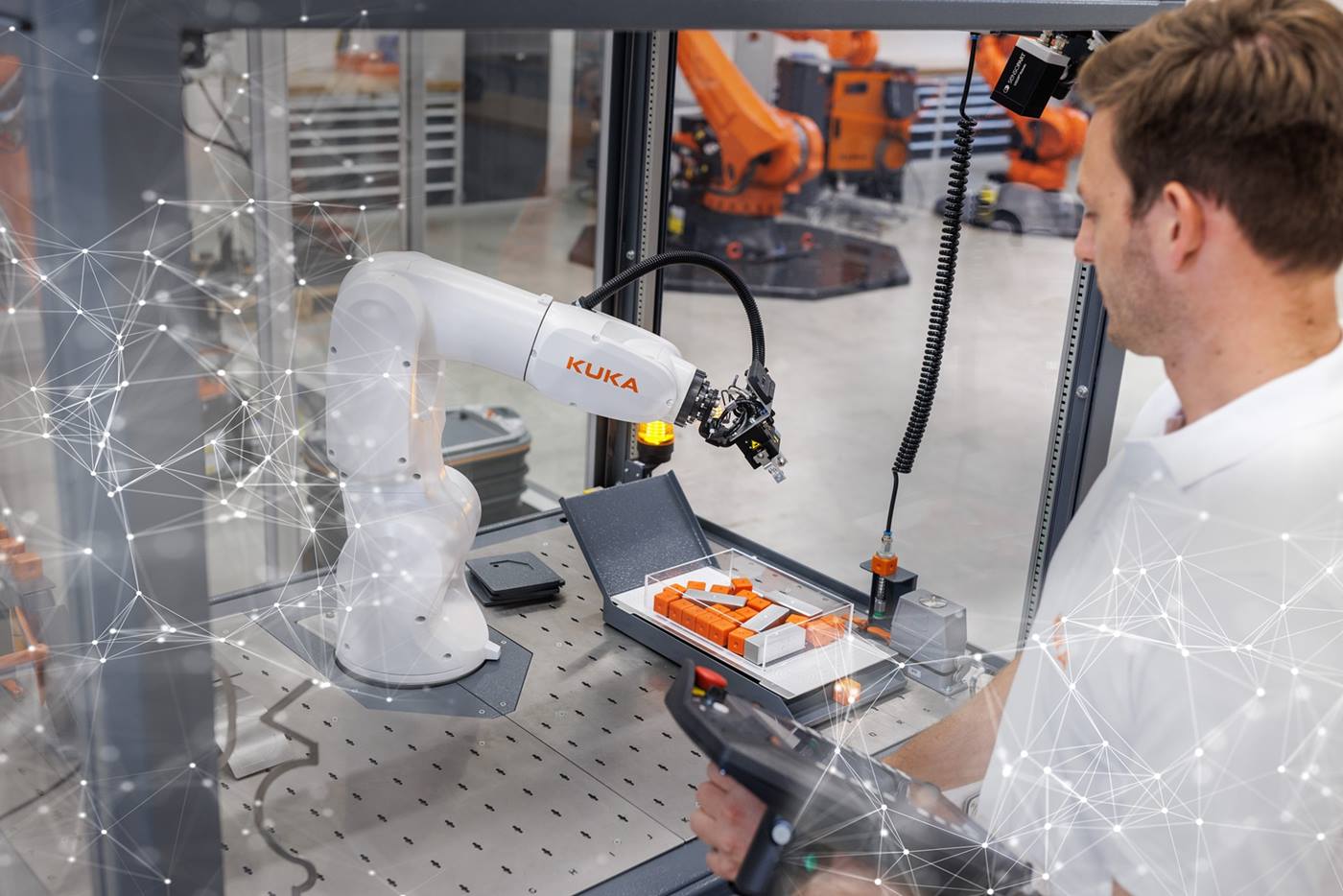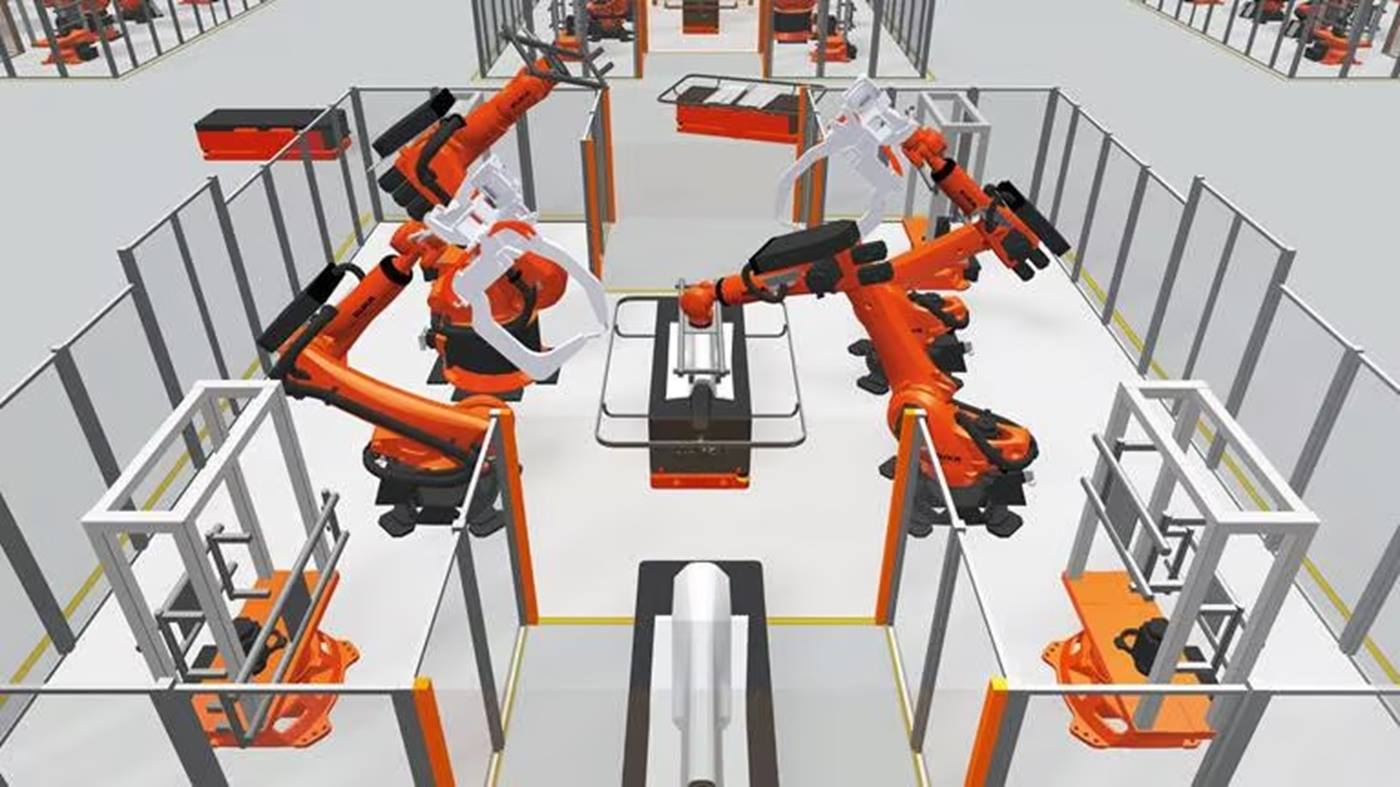It is a text-based AI assistant for easier simulation and programming of KUKA robots: the iiQWorks.Copilot. It is changing the way KUKA robots are programmed and commissioned. Launched as a development project with Microsoft, the first version of the Copilot will be available to customers by the end of the year. In a short interview, Christian Schletter, Business Developer for Simulation and Offline Programming at KUKA, reports on initial customer feedback and the advantages offered by the Copilot.
When we at KUKA integrate Artificial Intelligence into our products, we do so in a very targeted manner. Wherever it brings added value for our customers. We presented the iiQWorks.Copilot to an international audience at automatica 2025. What was the feedback like?
Christian Schletter: “Presenting the iiQWorks.Copilot at the trade fair was definitely worthwhile. The feedback from experienced robot programmers, decision-makers and new customers who have not yet automated was very positive. I even observed a real “wow effect” in many cases. This was mainly due to the fact that our customers can save a lot of time with the Copilot. If they no longer have to deal with the finer details of our KUKA Robot Language (KRL), they have more time to optimize the program. The fact that we at KUKA can map all these steps in the simulation and the digital twin of the robot cell is convincing. Here and there, I also observed some reluctance towards AI. However, as soon as our customers were able to try it out for themselves and understood the use cases for which they could deploy the Copilot, they were very quickly convinced of its added value. I always sensed enthusiasm when it became clear how quickly you can get a working program and a runnable simulation thanks to the support of the Copilot.”
How will this feedback be incorporated into the further development of the Copilot?
Christian Schletter: “We always use new technologies such as AI with the aim of making access to robotics and automation easier. This also applies to iiQWorks.Copilot. User-friendliness is our top priority. We want the Copilot to be even more intuitive and self-explanatory for our customers. The goal is that a natural language command such as ‘pick up boxes from the conveyor belt at TargetPick and palletize them in 3 rows, 2 columns and 3 layers at ReferencePlace [...]’ is sufficient for the Copilot to generate a fully functional robot program in a few minutes, which can be transferred directly to the robot controller after validation with the digital twin. Currently, a certain amount of basic knowledge about robot programming, offline programming and the representation of robots and other accessories in the simulation environment is still required. Our customers would also find the ability to chat with the Copilot very helpful. We are currently considering integrating a connection to our KUKA XPert knowledge database. We have also integrated an AI assistant here. It provides helpful explanations of the code and robot error messages, and gives users tips on how to further reduce the robot's cycle time.
What advantages does the Copilot offer our customers and what is it most commonly used for?
Christian Schletter: "The biggest advantage is definitely the time savings. For example, if the goal is to write a program that makes the robot palletize something, even experienced programmers need several hours to do this. With the support of iiQWorks.Copilot, it can be done in minutes. In addition to experienced programmers, we also want to use the text-based AI assistant to appeal to customers who are currently still somewhat wary of automation. The iiQWorks.Copilot is also ideal for sales meetings. Requirements can be set up and tested in the simulation directly during the meeting with the customer. For this purpose, we have integrated a separate area in the Copilot called “Layout&Template Agent”. Typical applications for the Copilot can currently be found in palletizing or pick& place applications. In the future, it would also be conceivable to optimize the layout of a robot cell in terms of energy consumption or cycle times."
Several minds at KUKA worked together with the Microsoft Industry Solution Engineering Team to develop iiQWorks.Copilot. With iiQWorks.Copilot, internal users at KUKA were able to reduce programming time for simple tasks by up to 80%. By simplifying the programming process, the agent will significantly expand the circle of people who will automate in the future. All details can be found in the Microsoft Customer Story about KUKA iiQWorks.Copilot:


















